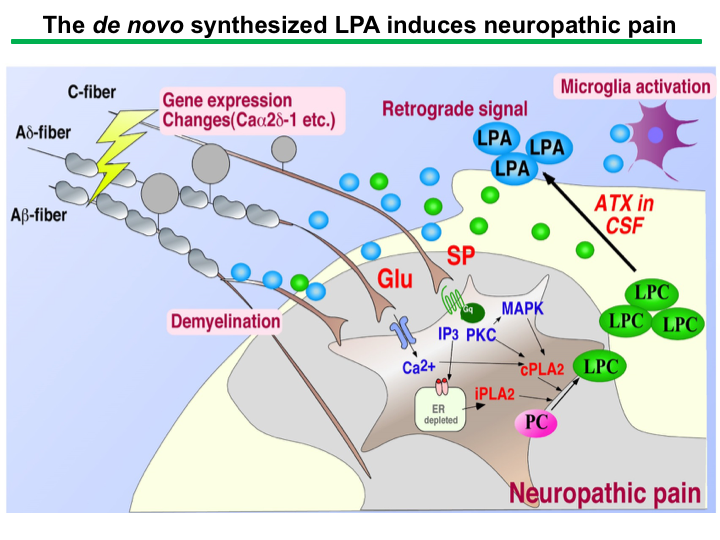Treating neuropathic pain is indeed challenging. Frequent, intractable chronic pain affects ~ 1% of the U.S. population, and thus needs further study. The etiology of neuropathic pain is diverse, ranging from trauma to infections to cancer. One circumstance that makes current treatment of neuropathic pain less-than-effective is that the underlying phenomena have yet to be fully identified and understood. In this regard, we have demonstrated a new molecular pathway that utilizes lipid-activated signaling in the generation of neuropathic pain by using several experimental techniques such as molecular, biological, pharmacological, immunohistochemistry, and de novo biosynthesis imaging. These techniques enabled us to discover lysophosphatidic acid acting via one of its cognate receptors, LPA1, which then activates both Rho A and Rho kinase (Nature Medicine 2004; Mol. Pain 2006, 2008; Neurosci. 2008; J. Neurochem. 2008). Identification of this pathway helped identify selected molecules that can be targeted in the treatment of neuropathic pain.
This study was done at Nagasaki University.

